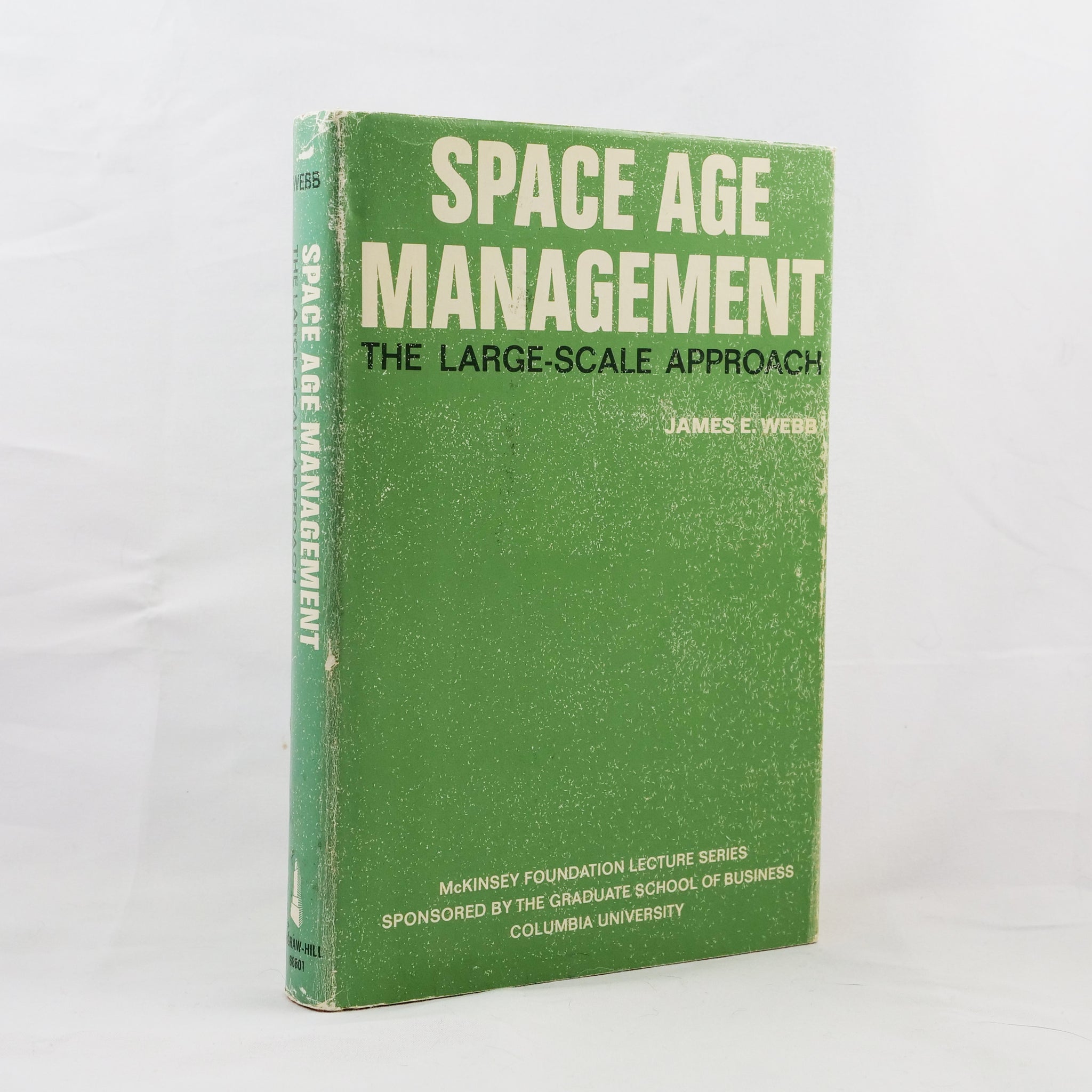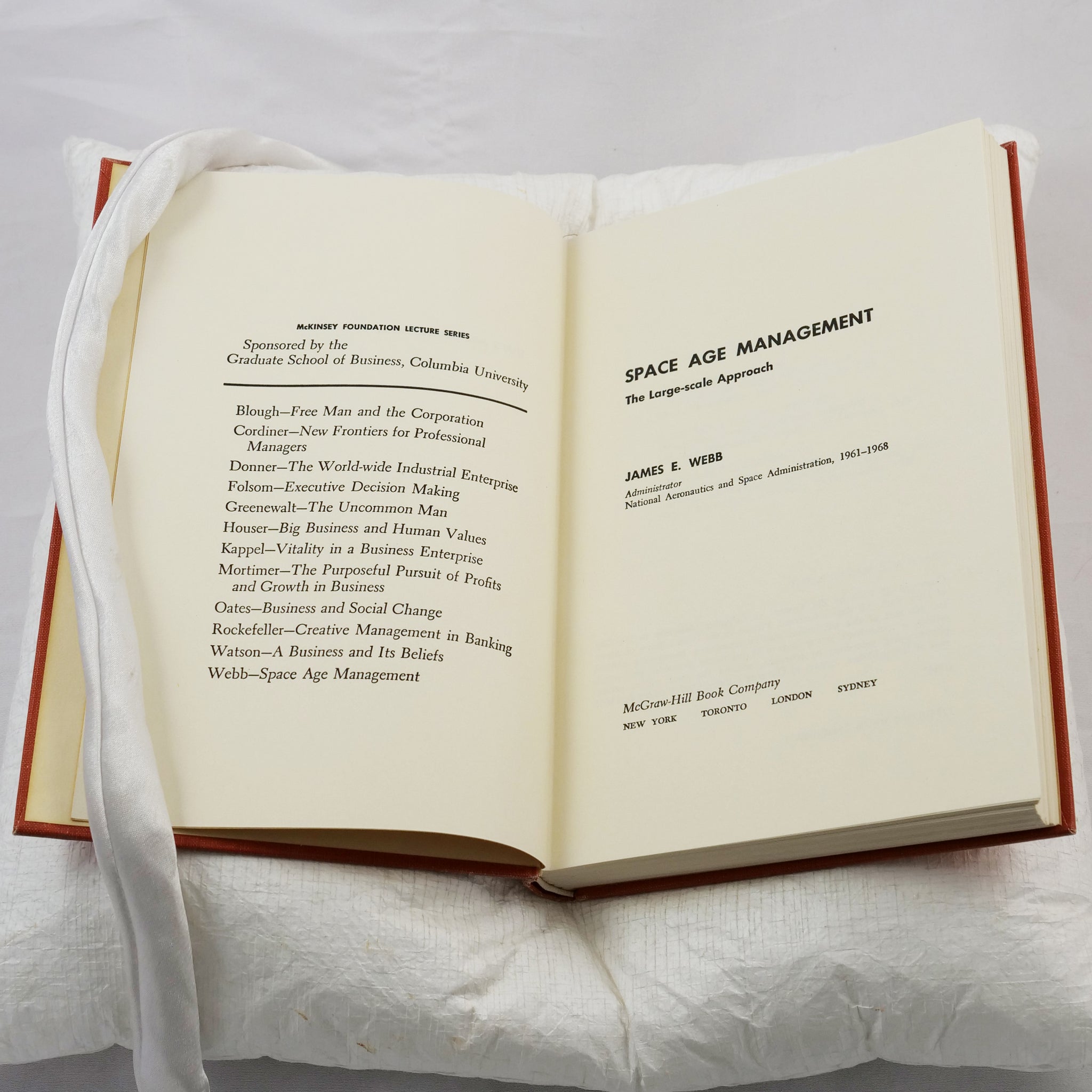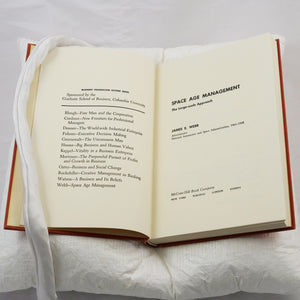Webb, James E. | Space Age Management. The Large-Scale Approach.
£850.00
-
First edition, first printing and rare in commerce.
James E. Webb (1906-1996) was NASA’s second administrator and arguably its most significant, seeing the agency through the Mercury and Gemini programs and the preparation for the Apollo missions. This volume is based on a series of lectures given at Columbia University’s Graduate School of Business in 1968, and discusses Webb’s experience of leading one of the largest and most complex organisations ever established. It explores why traditional management systems were no longer sufficient for modern technological undertakings, describes new methods pioneered by NASA, and asks that government and private companies invest in research on new organisational models.
To Webb, “the space program was more than a political race. He believed that NASA had to strike a balance between human space flight and science because such a combination would serve as a catalyst for strengthening the nation's universities and aerospace industry... Webb's vision of a balanced program resulted in a decade of space science research that remains unparalleled today. During his tenure, NASA invested in the development of robotic spacecraft, which explored the lunar environment so that astronauts could do so later, and it sent scientific probes to Mars and Venus, giving Americans their first-ever view of the strange landscape of outer space. As early as 1965, Webb also had written that a major space telescope, then known as the Large Space Telescope, should become a major NASA effort. By the time Webb retired just a few months before the first moon landing in July 1969, NASA had launched more than 75 space science missions to study the stars and galaxies, our own Sun and the as-yet unknown environment of space above the Earth's atmosphere. Missions such as the Orbiting Solar Observatory and the Explorer series of astronomical satellites built the foundation for the most successful period of astronomical discovery in history, which continues today”. Webb also “enhanced the role of scientists in key ways. He gave them greater control in the selection process of science missions and he created the NASA University Program, which established grants for space research, funded the construction of new laboratories at universities and provided fellowships for graduate students” (”Who is James Webb?”, NASA James Webb Space Telescope website).
Webb’s legacy has been complicated by allegations that at the State Department and NASA he played a leading role in the lavender scare, in which hundreds of gay personnel were fired from the federal government. In 2021 four astronomers published an op-ed in Scientific American requesting the renaming of the soon-to-be-launched James Webb Space Telescope, but NASA administrators announced that an inquiry into Webb’s actions determined it was unlikely he had played a key role in the firings and the name would be kept.
-
New York: McGraw-Hill, 1969.
Octavo. Original brick red cloth, titles to spine and upper board in white with black accents. With the dust jacket. A handful of lightly pencilled check marks in the margins. Spine rolled, cloth lightly rubbed at the edges, thin dark mark on the lower board. A very good copy in the rubbed jacket with faded spine panel and some wear and tiny nicks at the edges.










